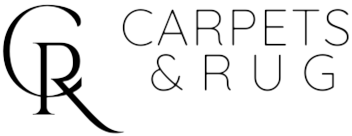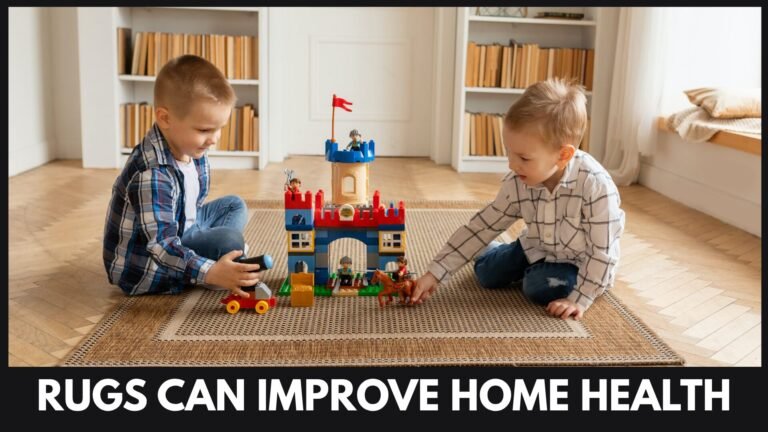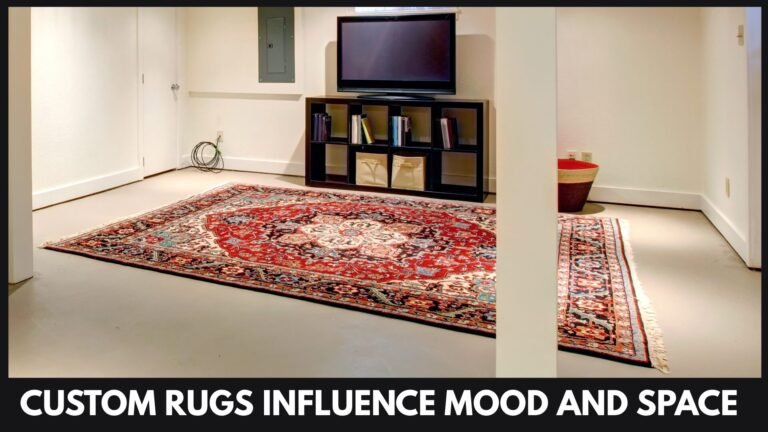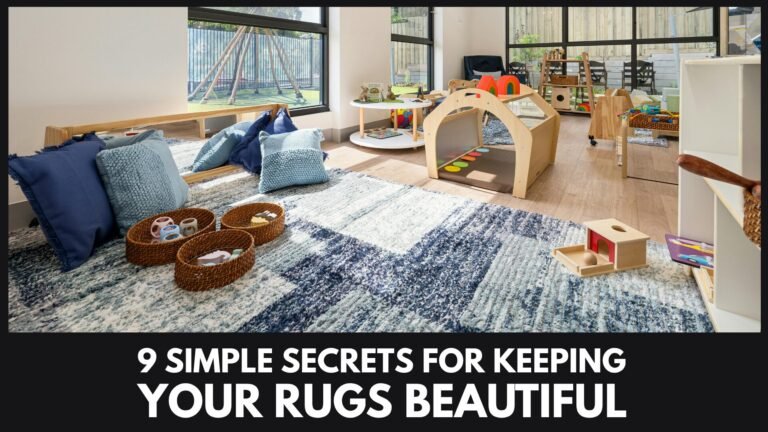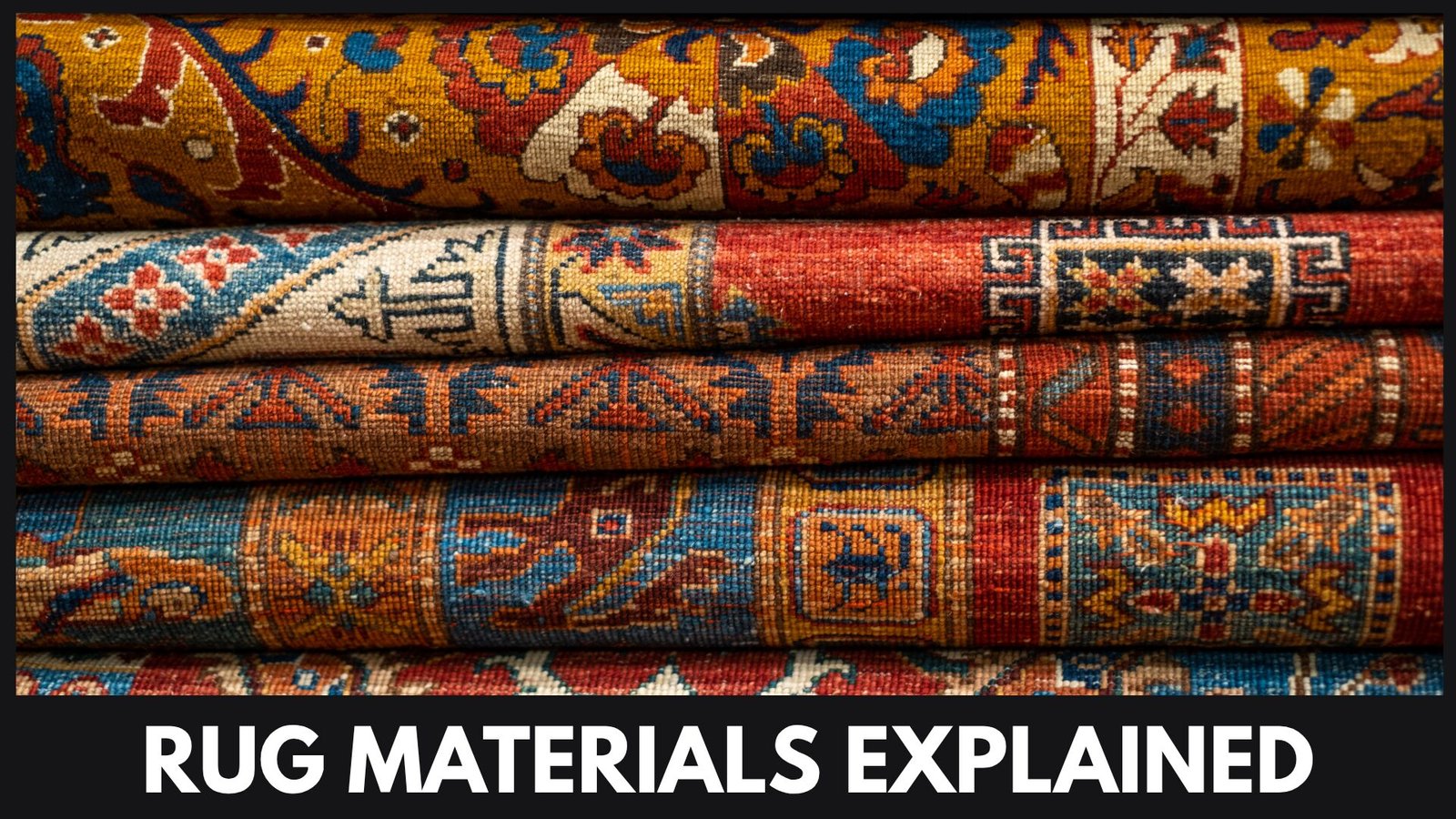
Rug Materials Explained: Wool, Silk, Jute, and Synthetic, which Is Right for You?
Choosing the perfect rug involves more than picking out a color or pattern. The fiber at the heart of your rug shapes everything from its feel beneath your feet to its durability, ease of cleaning, cost, and eco-friendliness. Wool, silk, jute, and synthetic materials are the most widely used options for modern rugs, each with distinct benefits and trade-offs. Understanding the differences will help you select a rug that matches your lifestyle, room, and preferences.
This comprehensive guide provides a detailed look at these four primary rug materials showing what makes each unique, how they respond to daily use and care, and where each type of rug shines in your home.
Table of Contents
Wool Rugs
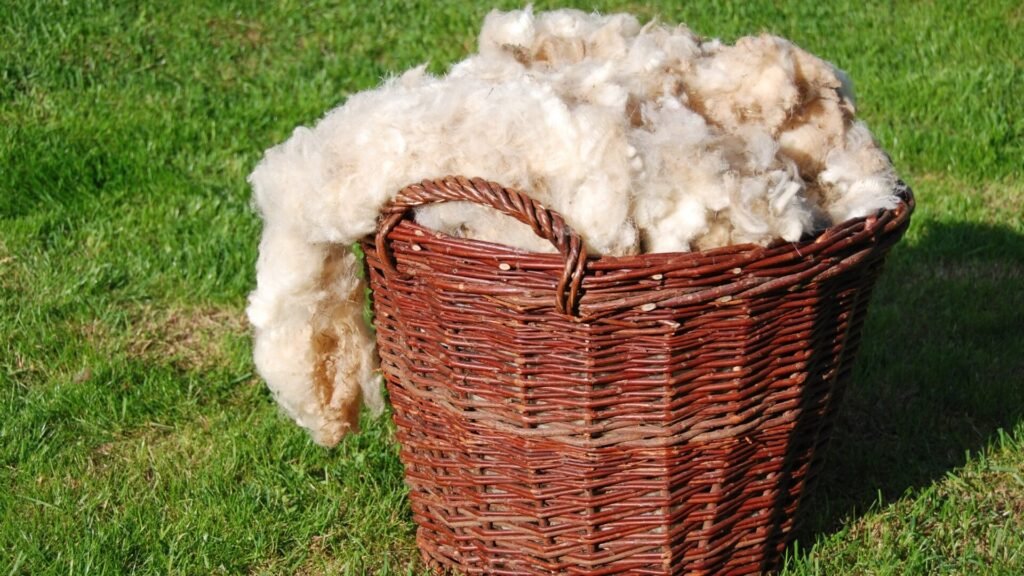
Wool is one of the most revered rug fibers, valued for generations thanks to its natural qualities and versatility.
Pros
- Durability: Wool is known for its strong, elastic fibers, resulting in long-lasting rugs that withstand years of foot traffic. Properly maintained, a wool rug can last decades.
- Natural Stain Resistance: Wool contains lanolin, a protective waxy coating that helps repel spills and resist dirt. Liquids often bead up on the surface, giving you time to blot before a stain sets in.
- Softness: Wool rugs feel naturally plush and springy, adding warmth and comfort underfoot.
- Insulation: Wool insulates against both heat and cold, which is great for homes in varying climates.
- Eco-Friendly: Wool is renewable, biodegradable, and often produced using sustainable farming.
Cons
- Cost: The labor and materials make wool rugs more expensive than some alternatives. High-quality, hand-knotted wool rugs are premium investments.
- Vulnerability to Mold: Wool will absorb moisture and is susceptible to mildew if left damp, especially in humid rooms or basements.
- Potential to Fade: Extended sunlight exposure may cause wool colors to fade.
- Attracts Moths: Wool can attract moths or carpet beetles if not cared for, especially in storage.
Care Needs
- Vacuuming: Vacuum gently, ideally with suction only. Avoid beater bars that can pull at the fibers.
- Moisture Management: Clean and dry spills quickly. Keep out of damp areas.
- Professional Cleaning: Occasional deep cleaning by professionals preserves integrity and softness.
Recommended Uses
- Living rooms, bedrooms, dining areas where comfort and style are key and traffic is moderate to high (except for very wet places).
- Low to moderate sunlight: Wool is fantastic in spaces away from windows with intense direct sunlight.
Silk Rugs
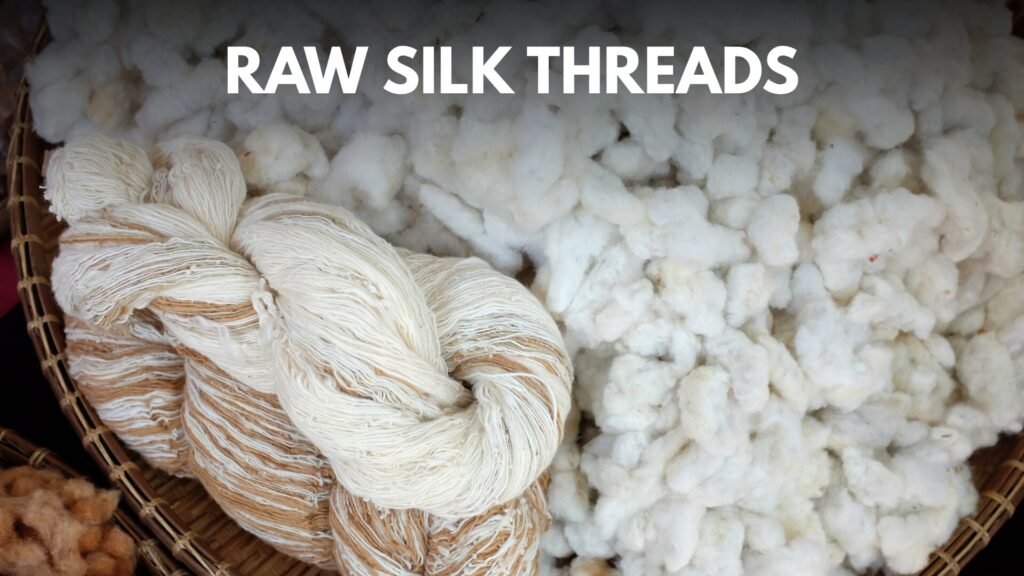
Silk is treasured for its softness, luxurious sheen, and ability to yield intricate patterns.
Pros
- Visual Appeal: Silk provides a reflective, subtle shine that elevates any room with brilliant color depth.
- Fineness: Silk threads are thinner than wool, allowing for more detailed designs and complex patterns.
- Softness: Nothing matches the delicate feel of silk under bare feet.
Cons
- Cost: Pure silk rugs are among the most expensive due to the rarity of material and skilled labor required to craft them.
- Fragility: Silk is not as resilient as wool. Heavy furniture or high heels can easily crush or mark the pile.
- Stain Sensitivity: Silk absorbs liquids rapidly. Stains are harder to remove and permanent marks are common if not promptly addressed.
- UV Sensitivity: Silk fades quickly in sunlight.
Care Needs
- Gentle Handling: Only use vacuum suction—never brushes or beater bars.
- Prompt Blotting: Address spills immediately, blotting with a clean, dry cloth.
- Professional Care: Silk requires expert cleaning; avoid water-based or commercial cleaning products.
Recommended Uses
- Formal rooms, bedrooms, accent spaces with low foot traffic and minimal risk of spills or rough use.
- Avoid sunrooms or entryways; silk performs best away from direct sunlight and moist or busy areas.
Jute Rugs
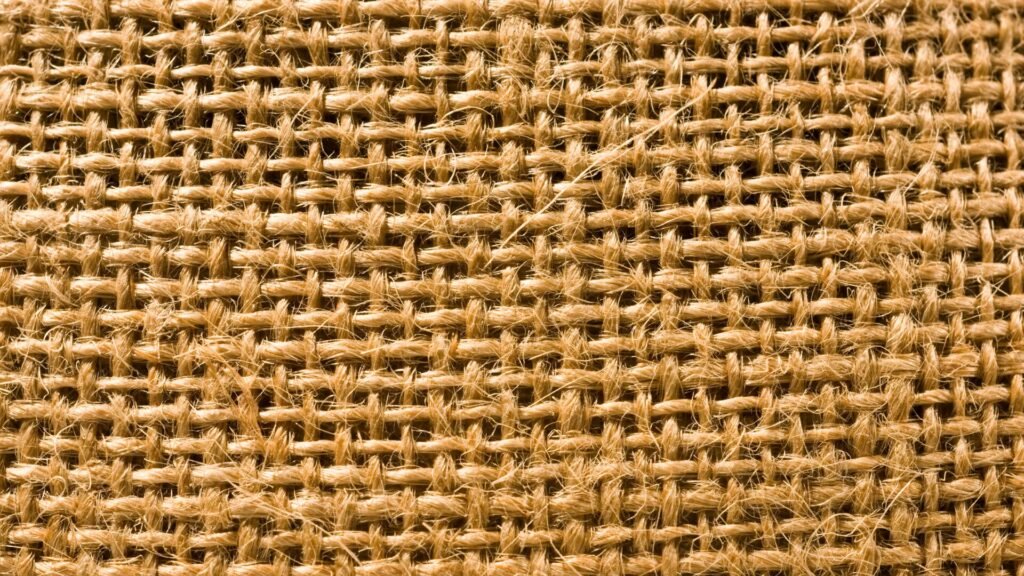
Jute offers a distinctly organic look, inviting warmth and eco-consciousness into home design.
Pros
- Eco-Friendly: Jute is made from plant fibers and is fully biodegradable and renewable.
- Natural Texture: Jute rugs add a soft, earthy texture to rooms, fitting seamlessly within contemporary, rustic, or bohemian settings.
- Affordability: Jute is typically less expensive than wool or silk, making it accessible for larger spaces or layering.
- Pet-Friendly: It holds up reasonably well to pet scraping and claws, though it can be tempting for pets to chew.
Cons
- Water Sensitivity: Jute is highly absorbent and may develop mold or mildew in damp settings. Stains are tough to remove once set because water or cleaning solutions can damage the fiber.
- Coarse Feel: While some jute rugs are relatively soft, the fiber itself is rougher underfoot compared to wool or silk.
- Durability Limits: Not as resilient in high-traffic zones, especially when exposed to lots of moisture or heavy use.
- Odor: May trap smells, especially if exposed to frequent moisture.
Care Needs
- Regular Vacuuming: Use gentle suction only; avoid pushing dirt deeper into the fiber.
- Spot Cleaning: Dry spot clean only; avoid soaking water or harsh chemicals.
- Keep Dry: Never place in bathrooms, kitchens, or damp basements.
Recommended Uses
- Living rooms, bedrooms, hallways: especially in dry climates or where you want a relaxed, natural texture.
- Layering: Look stylish as a neutral base layer beneath smaller patterned rugs or in combination with other textures.
Synthetic Rugs
Synthetic fibers such as polypropylene, nylon, and polyester provide practical options for modern families and busy spaces.
Pros
- Durability: Synthetic rugs are designed to thrive in high-traffic zones, resisting crushing, fading, and general wear over years of use.
- Affordability: Offering the look of natural fibers at a lower price, making style changes more accessible.
- Stain Resistance: Synthetic fibers actively repel many spills; water and most stains will not quickly sink in, allowing easy cleaning.
- Mold Resistance: Being non-porous, synthetic rugs do not easily harbor mold, making them suitable for humid environments.
- Fade Resistance: UV-stabilized synthetic rugs are less likely than natural fibers to fade in sunlit rooms or outdoor areas.
- Easy Maintenance: Most can be cleaned with soap and water; some are even safe to hose off outdoors.
Cons
- Less Natural Feel: Some synthetics lack the authenticity and texture of wool or other natural fibers.
- Environmental Impact: Most synthetics are made from nonrenewable resources and are not biodegradable.
- Potential Off-Gassing: May initially emit odors due to chemical manufacturing; these typically dissipate over time.
Care Needs
- Routine Vacuuming: Use any standard vacuum.
- Spot Cleaning: Blot up spills promptly; mild soap and water are usually safe.
- Deep Cleaning: Many synthetic rugs tolerate thorough cleaning, including outdoor hosing (check manufacturer instructions).
Recommended Uses
- Kitchens, hallways, playrooms, entries, outdoor patios: great for high-traffic or humid areas.
- Budget-friendly décor changes: ideal for spaces where style changes often.
Choosing the Right Rug for Each Room
- Living Room: Wool or synthetic for comfort and resilience.
- Bedroom: Wool or silk for softness and luxury.
- Entryways and Hallways: Synthetic or jute for their durability (jute in drier climates).
- Dining Room: Synthetic for stain resistance or tightly woven wool for easy cleaning.
- Outdoor Spaces: Synthetic only.
- Pet-Friendly Homes: Synthetic or tightly woven, low-pile wool is best.
Comparing Key Features of Rug Materials
| Feature | Wool | Silk | Jute | Synthetic |
|---|---|---|---|---|
| Durability | High (needs care) | Moderate (delicate) | Moderate (can shed) | Very high |
| Softness | Very soft | Silkiest | Moderately soft | Varies (often soft) |
| Stain Resistance | Good if cleaned quickly | Low | Low | Very high |
| Water Resistance | Low | Low | Very low | High |
| Maintenance | Moderate | High | Moderate | Low |
| Cost | High | Very high | Low to medium | Budget-friendly |
| Eco-Friendly | Yes (renewable) | Yes (luxury) | Yes (plant-based) | No (unless recycled) |
| Best For | Living/bedrooms | Formal spaces | Dry, casual spaces | Kids, outdoor, busy spaces |
Frequently Asked Questions
1. Which rug material is easiest to clean at home?
Synthetic rugs are the easiest to clean and maintain, handling regular vacuuming and even soap-and-water washing in many cases. Wool is also manageable with routine care but may need professional cleaning for stains or deep dirt.
2. Are there eco-friendly options among these rug fibers?
Yes, both wool and jute are renewable and biodegradable, making them ideal for eco-conscious buyers. Silk is a natural fiber, mainly suited for luxury settings, while synthetics have greater environmental impact unless made from recycled materials.
3. What rug material is best for allergy sufferers?
Wool naturally resists dust mites and molds if kept dry, making it a good hypoallergenic choice. Synthetic fibers are also less likely to harbor allergens and are simple to clean.
4. Can I use a silk rug in a high-traffic area?
Silk rugs are best kept in low-traffic, formal spaces. They do not handle foot traffic, spills, or heavy furniture pressures well and require gentle care.
5. How long can I expect each rug material to last?
Wool and high-quality synthetic rugs can last for decades with proper care. Jute typically lasts 3–7 years, depending on traffic and maintenance, while silk rugs, with gentle use, will keep their beauty long term but may show signs of wear sooner if used in busy spaces.
Choosing the right rug material is a balance between style, comfort, budget, and practicality. By understanding your priorities and where the rug will be used, you can confidently select a rug that not only looks beautiful but truly fits your home and lifestyle.
